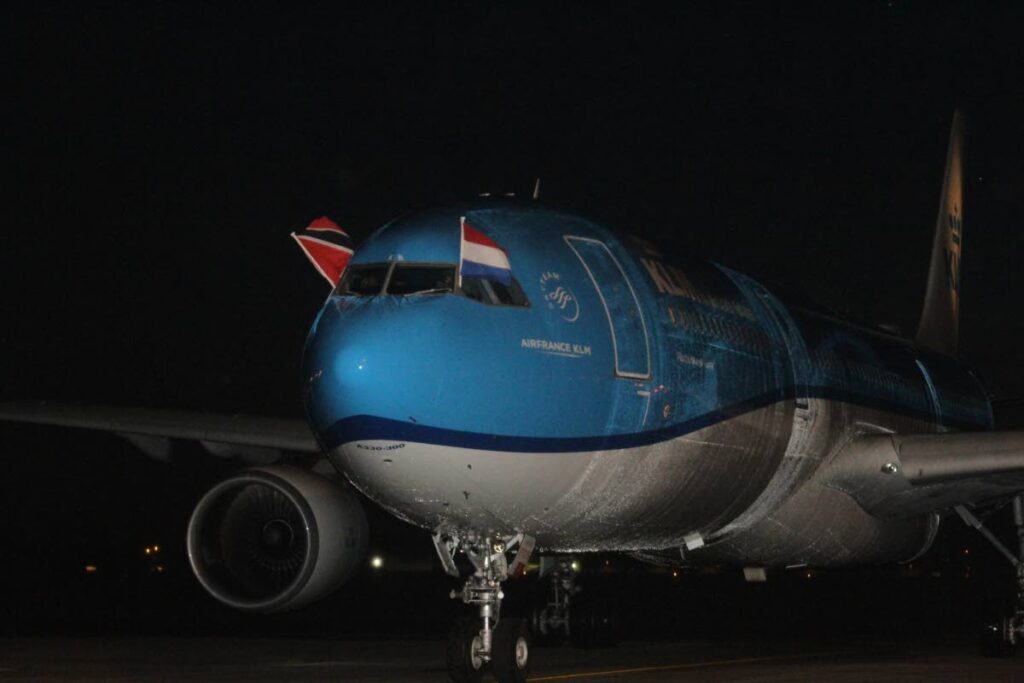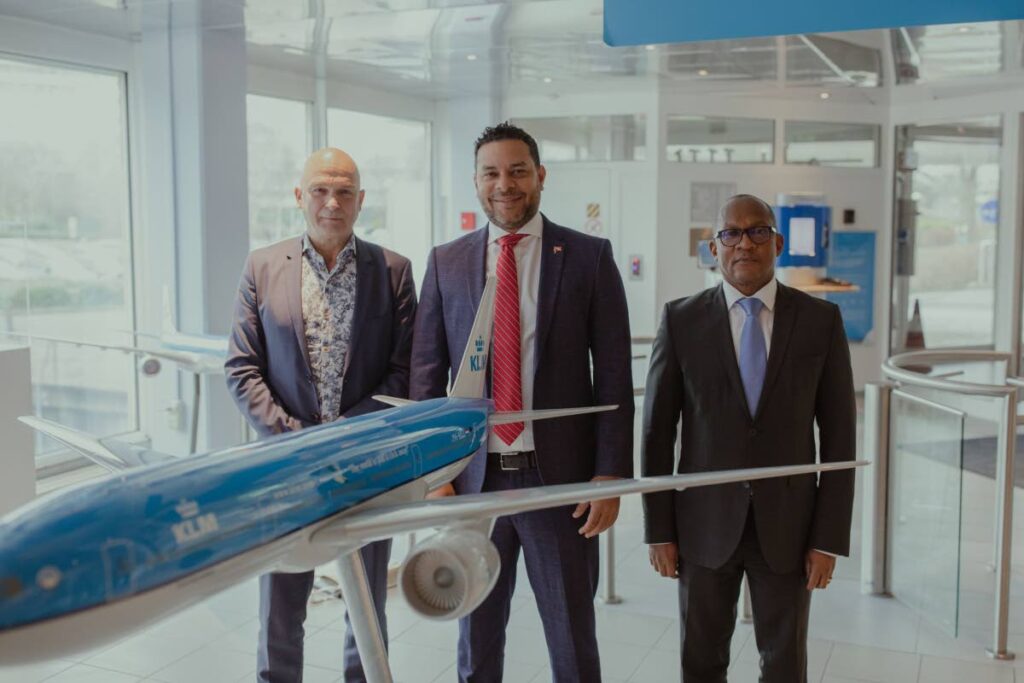KLM – World's oldest airline

In 1919, a young aviation lieutenant named Albert Plesman sponsored the first aviation exhibition in Amsterdam. Attendance at the exhibition was over half a million.
After the exhibition, several Dutch commercial interests decided to establish an airline, and Plesman was nominated to head it.
In September 1919, Queen Wilhelmina awarded the yet-to-be-founded airline its "Royal" predicate.
On October 7, 1919, eight Dutch businessmen, including Frits Fentener van Vlissingen, founded the Royal Dutch Airline (KLM) as one of the first commercial airline companies. Plesman became its first administrator and director.
The first KLM flight took place on May 17, 1920. KLM's first pilot, Jerry Shaw, flew from Croydon Airport, London to Amsterdam, using a leased Havilland DH-16 aircraft.
In 1920, KLM carried 440 passengers and 22 tons of freight. In April 1921, after a winter hiatus, KLM resumed its services using its pilots and Fokker F II and III aircraft. In 1921, KLM started scheduled services.

KLM's first intercontinental experimental flight took off on October 1, 1924, from Amsterdam to Jakarta (then called 'Batavia'), Java, in the Dutch East Indies (present-day Indonesia) as the final destination. The flight was operated using a Fokker F VII aircraft, piloted by Jan Thomassen à Thuessink van der Hoop.
In 1927, Baltimore millionaire Van Lear Black, who had heard about the 1924 flight, chartered H-NADP to do the same flight, which departed on June 15 and successfully flew back after 16 days, to much rejoicing.
This inspired KLM to make a second flight, which left on October 1, returning successfully with much experience gained.
In September 1929, regular scheduled services between Amsterdam and Batavia commenced. Until the outbreak of the Second World War in 1939, this was the world's longest-distance scheduled service by airplane. By 1926, it was offering flights to Amsterdam, Rotterdam, Brussels, Paris, London, Bremen, Copenhagen and Malmö, using primarily Fokker F II and III aircraft.
In 1930, KLM carried 15,143 passengers. The Douglas DC-2 was introduced on the Batavia service in 1934.
The first experimental transatlantic KLM flight was between Amsterdam and Curaçao in December 1934, using the Fokker F XVIII "Snip" aircraft.
In July 1935, KLM had three major international passenger flight crashes in one week. The "Kwikstaart" crashed in Amsterdam on July 14, the "Maraboe" in Bushir and on July 20, the “Gaai” crashed in San Giacomo.

The week of July 14-20, 1935, is known as the "black week." In these three crashes, KLM lost three airplanes and lost crew in two crashes. With an earlier crash in April of the "Leeuwerik," KLM had lost around 15 per cent of its pilots. As a result, there was a shortage of crew members and airplanes. The Amsterdam to Milan flight service was as a result taken over by Germany’s Lufthansa.
After the end of the Second World War, KLM immediately started to rebuild its network. Since the Dutch East Indies were in a state of revolt, Plesman's priority was to re-establish KLM's route to Batavia. This service was reinstated by the end of 1945. Domestic and European flights resumed in September 1945, initially with a fleet of Douglas DC-3s and Douglas DC-4s.
On May 21, 1946, KLM was the first continental European airline to start scheduled transatlantic flights between Amsterdam and New York City, using Douglas DC-4 aircraft. By 1948, KLM had reconstructed its network and resumed services to Africa, North and South America and the Caribbean.
In 1957, KLM introduced the four-engine turboprop Vickers Viscount 800 on its European routes. Beginning in September 1959, KLM introduced the four-engine turboprop Lockheed L-188 Electra on some of its European and Middle Eastern routes. In March 1960, the airline introduced the first Douglas DC-8 jet into its fleet.
In 1968, the stretched Douglas Super DC-8-63 jet aircraft entered service. With 244 seats, the Super DC-8 was the largest jetliner in scheduled passenger service at the time. Its size was surpassed by the Boeing 747 first flown in 1969. On March 6, 1967, KLM ordered its first Boeing 747 which marked the beginning of its use of widebody aircraft and an improved relationship between the airline and Boeing since the 1939 crash of a Boeing 307 Stratoliner carrying KLM representatives on a demonstration flight.

In July 1995, KLM introduced the Boeing 767-300ER. KLM renewed its intercontinental fleets by replacing the Boeing 767s, Boeing 747-300s and eventually, the McDonnell Douglas MD-11s with Boeing 777-200ERs and Airbus A330-200s. Some 747s were withdrawn from service first. The MD-11s remained in service until October 2014. The first Boeing 777 was received on October 25, 2003, while the first Airbus A330-200 was introduced on August 25, 2005.
On September 30, 2003, Air France and KLM agreed to a merger plan in which Air France and KLM would become subsidiaries of a holding company called Air France-KLM. Both airlines would retain their own brands with Charles de Gaulle Airport and Amsterdam Airport, Schiphol, becoming key hubs.
Since 1971, the KLM livery has primarily featured a bright blue fuselage, with variations on the striping and details. Originally a wide, dark blue cheatline covered the windows and was separated from the light grey lower fuselage by a thin white stripe. The KLM logo was placed centrally on the white tail and the front of the fuselage.
In December 2002, KLM introduced an updated livery in which the white strip was removed and the dark-blue cheatline was significantly narrowed. The bright blue colour was retained and now covers most of the fuselage. The KLM logo was placed more centrally on the fuselage while its position on the tail and the tail design remained the same. In 2014, KLM modified its livery with a swooping cheatline that wraps around the entire forward fuselage.
Today, KLM is the oldest operating airline in the world and has 35,488 employees with a fleet of Boeing and Airbus jet aircraft.
KLM and its partners serve 163 destinations in 70 countries on five continents from their hub at Amsterdam Airport, Schiphol.
KLM has return flights three times a week from Amsterdam to Port of Spain, Trinidad via St Marten.


Comments
"KLM – World’s oldest airline"